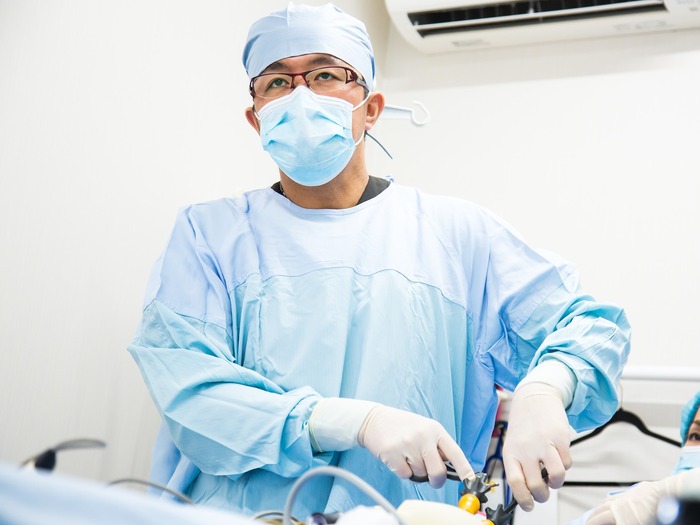Inguinal hernia

Inguinal hernia, commonly referred to as a "hernia," affects an estimated 400,000 to 500,000 people annually. However, only about 120,000 patients undergo surgery. This indicates that many people live with inguinal hernias without seeking treatment.
Inguinal hernias are often overlooked because the swelling at the base of the leg can be pushed back into place and doesn't significantly interfere with daily activities due to its benign nature. Nevertheless, ignoring the symptoms can lead to a condition known as "incarceration," where the protruded intestine cannot be retracted back. This can cut off the blood flow, leading to a critical state that could be life-threatening.
What is an Inguinal Hernia?
An inguinal hernia occurs when the intestine or other abdominal contents bulge through a weak spot in the abdominal muscles around the groin area.
Inguinal hernias can affect people of all ages, from infants, mostly due to congenital factors, to the elderly. In adults, muscle weakness due to aging is a common cause, especially in men over 40.
The evolution of bipedalism in humans has placed additional pressure on the lower abdomen, causing organs and tissues to push through gaps between the muscles. The protrusion that occurs is what we identify as an inguinal hernia.
Causes of Inguinal Hernia
As mentioned, congenital factors in children and muscle weakness due to aging in adults are primary causes. Specifically, in the groin or inguinal region, there's a structure called the inguinal canal, which in men contains the spermatic cord and in women the round ligament of the uterus. Muscle weakening around this canal can make it prone to open, allowing the intestine to herniate.
Symptoms of Inguinal Hernia
Weakening of the groin's wall allows a part of the abdomen to bulge out, creating a hernia. This can be recognized as a swelling at the thigh's base, which may disappear when lying down or can be pushed back in.
Other symptoms include:
- A soft lump in the groin area (size varies).
- Discomfort or a feeling of heaviness in the lower abdomen.
- Occasional sharp pains in the lower abdomen.
- A sensation of bloating.
Risks of Inguinal Hernia (Incarceration)
Though often painless and retractable, if left untreated, inguinal hernias can lead to complications, including incarceration, where the herniated intestine cannot return, leading to strangulation (cutting off blood flow).
This can cause the intestine to die (necrosis) and potentially perforate, allowing its contents to leak into the abdominal cavity, leading to peritonitis, a severe inflammatory condition.
Emergency surgery becomes necessary in such critical conditions, and delays in treatment can be fatal.
Inguinal Hernia can Only be Treated with Surgery
Inguinal hernias cannot heal on their own or be treated with medication. While hernia belts can offer temporary relief, they do not constitute a treatment. Surgery is the only cure.
Advancements in medical science have made it possible to perform these surgeries with minimal physical burden using laparoscopy. Gi Surgical Clinic specializes in providing laparoscopic inguinal hernia repair, focusing on safer and less invasive techniques. One such advanced procedure is the Single Incision Laparoscopic Surgery-Total Extraperitoneal (SILS-TEP) method, which involves making a single incision in the navel.
For more details on inguinal hernia treatment, please refer to our services.
